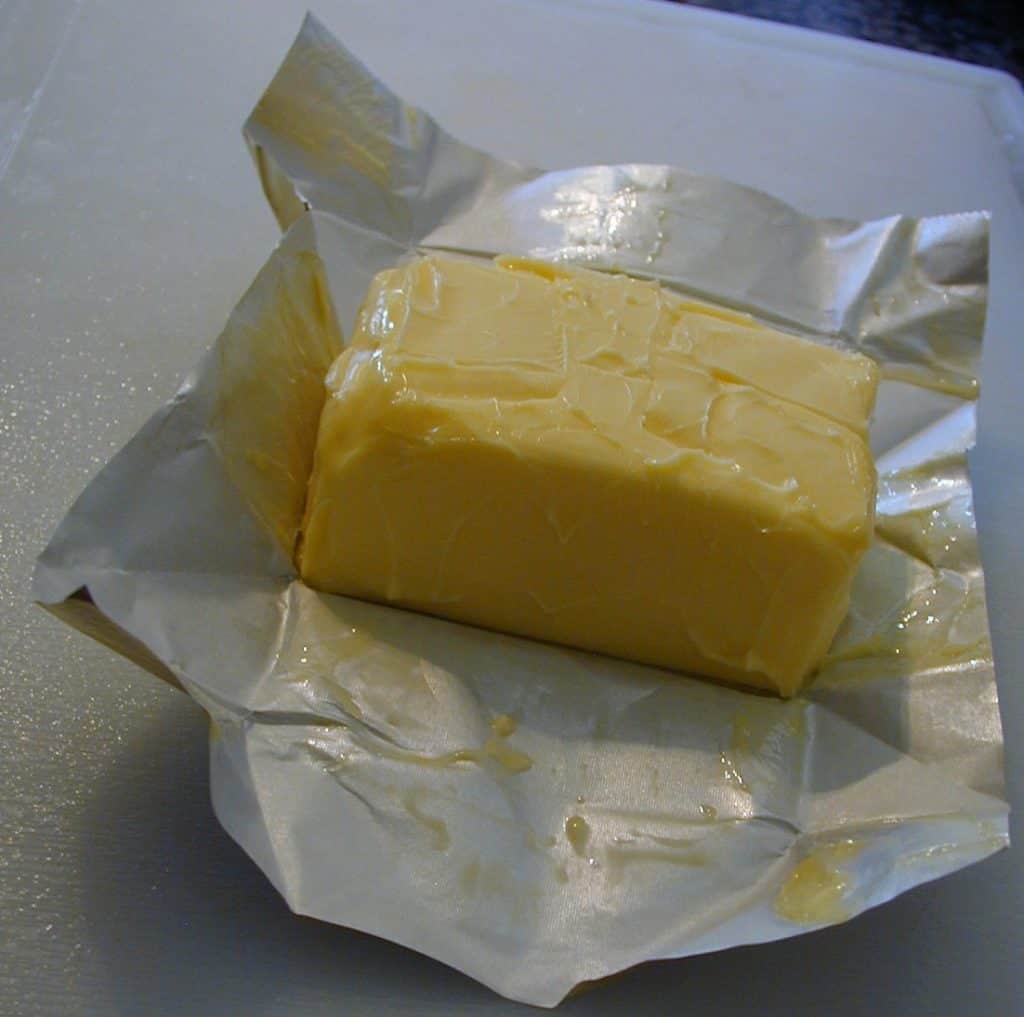Butter is definitely one of the most used items in most households. Whenever we come across a discount or we simply need to store it for later, we wonder what to do with it. Don’t worry – you can easily freeze butter
All manufactures, as well as scientists, agree that it’s one of the few dairy products that can be safely frozen. Furthermore, many people freeze butter regularly, since running out of it can be a problem, especially when making breakfast or baking.

However, as with any new venture, freezing butter can prove to be a little tricky. Here are some questions you might be asking when it comes to storing butter this way.
Remember to check out our article on how to make Bacon Butter!
Does freezing butter ruin it?
No. Butter and margarine are both products that can be frozen so as long as they remain that way, they are safe to use for a long time. When you freeze fresh butter, it will remain fresh and none if its flavors will be lost.
Frozen butter retains its flavors and properties for up to 12 months. After that time, it might start to lose its taste and go off — then it’s not safe for consumptions and it’s best to discard it.
How long does defrosted butter last?
After defrosting, good quality and high-milk butter will last a maximum of 3 months in the fridge and about 2 weeks at room temperature. Defrosted butter has around the same shelf life as butter that hasn’t been frozen – so it’s always safe to use it for the same amount of time.
Some kinds of butter, however, upon defrosting, have a shelf life of 30 days due to its low milk content. These are usually types of butter of lesser quality.
Can you freeze Clover butter?
Regardless of what butter brand you use, it can be safely frozen. Clover is only one brand that offers butter so it can be frozen without any problems. The only thing you have to make sure is that you wrap it tightly in foil, freeze it in the original packaging or place it in a reusable plastic box in order to prevent oxidation.
Can I freeze whipped butter?
Just like butter, its whipped version freezes perfectly. You can use Tupperware, the original packaging or foil – just make sure it’s properly closed so that it doesn’t lose its taste or pick up scents from the freezer.
Moreover, you can freeze other spreadable products, such as margarine, milk, and cream cheeses. They all freeze well as long as they are properly sealed.
Can I freeze previously opened butter?
Generally, it’s best not to freeze an opened tub of butter. Freezing opened food items causes a risk of bacteria, and it won’t make the butter last longer than it normally would.
How long can you freeze butter for?
Good quality butter will last in the freezer for at least 6 months and up to a year. Salted butter will do even better as the cold temperature emphasizes the saltiness. After over a year, you might start noticing that the butter has gone bad or that it has frostbites, which means that you should not eat it. Nevertheless, if you freeze it properly and not store it for longer than a year, you can safely defrost and consume it.
How do you defrost frozen butter?
In order to defrost butter, you have to thaw it. You can choose to leave it at room temperature, and the butter will defrost in 3 to 4 hours. Alternatively, if you’re not in a hurry, you can place the butter in the fridge and have the butter defrosted in 6 to 8 hours.
Instead of thawing your butter, you can choose to place it in a water bath. To do that, place the butter into a sealable plastic bag and insert it into a bowl of warm (not too hot) water. This method will decrease the defrosting time considerably while not making the butter lose its flavor.
Rolling or pounding the butter is also an effective way of thawing the butter. For this, use a rolling pin or a meat tenderizer to gently roll/pound out the butter. Then, leave the butter at room temperature for a few minutes until it softens up. The thinner the product, the shorter the defrosting time.
Another way to defrost butter is to place it in the microwave, but this method will most often than not melt the butter, and it will no longer be spreadable, so it’s better to take the time and wait.
How do you thaw frozen butter for baking?
There are several ways to thaw butter so that it’s soft enough for baking. Firstly, you can cut the butter into small pieces and place it on a large plate at room temperature. That way, the butter will soften up in 20 to 40 minutes. Alternatively, you can place the plate with butter in the microwave, turn down the power to low and leave it in for approximately 10 seconds at a time until the butter softens up.
Another way to soften up the butter for cooking is simply to grate it. That way, you can move on to the next baking steps without any delay and the butter will melt naturally with the rest of the ingredients.
Does melting frozen butter fast ruins it?
If the butter is completely frozen, melting it very fast can make it unusable. Liquid butter is not spreadable nor is it suitable for cooking or baking since it won’t blend with other ingredients. Even though consuming melted butter from a microwave or hot water bath won’t make you sick, it’s not a good defrosting idea.
How do you store butter long term?
If you either bought a couple of tubs of butter or you have to store it for a longer period, the best way to do that is to freeze it. Butter is best stored wrapped in foil and frozen — that way, it can be consumed for up to 12 months.
Unfortunately, freezing the butter is the only safe and successful way to store butter for a long time, but it’s also one of the most effective methods.
Can you freeze the butter again after it’s been defrosted?
After defrosting butter, it cannot and shouldn’t be frozen again. This rule applies to all food items that have been frozen in the first place. Constantly freezing and defrosting food products can give you food poisoning since you’re risking freezing the food with bacteria that have set on outside of the food after the first defrosting.
How can you tell if butter is rancid?
The main sign that the butter has gone bad is discoloration. Fresh butter has an even pale yellow color (depending on the brand and the amount of milk used in production). If you slice your butter and the middle has a lighter color than the outside, then the butter has gone bad.
Another way to tell that the better is no longer safe to consume are black spots of mold on the outside. Moreover, if the butter smells bad, starts falling apart or is too mushy, then you should also throw it away since there are signs of mold.
Moreover, butter can also get frostbites, which will look like white snowflakes on the outside. This means that the butter was frozen for way too long and lost its taste. In this case, it’s best not to consume it.
Does freezing butter or margarine change the properties?
Freezing butter can affect its freshness and flavors in a minor way. The butter is still safe and good for consumption, but it may just not be as fresh as it would be if you were to buy a new tub. Moreover, after a few months in the freezer, the butter might start to pick up various scents from the freezer. Therefore, it’s important to seal the butter properly prior to freezing it in order to avoid this situation.
How to use frozen butter?
Frozen butter is part of many recipes, but it can also be used in frying or dry heat cooking. Simply cut a piece of frozen butter and melt it on a pan before frying meat, vegetables or fish. Frozen butter for frying works the same way as a defrosted one.
Another way to include frozen butter in cooking is to add it to your roasts, fish in foil or other oven-baked meals. It will add texture and taste and melt slower, giving it a juicy flavor.
What recipes use frozen butter?
Contrary to popular belief, you don’t always have to soften the butter prior to using it for cooking. Frozen butter is part of many recipes, such as cookies, cupcakes or biscuits. The reason behind it is that frozen butter melts in the oven creating steam, which, in turn, lifts the baked good and helps form flakey layers. In order to incorporate frozen butter into your recipe, simply grate it on the large holes and add to your blend.

